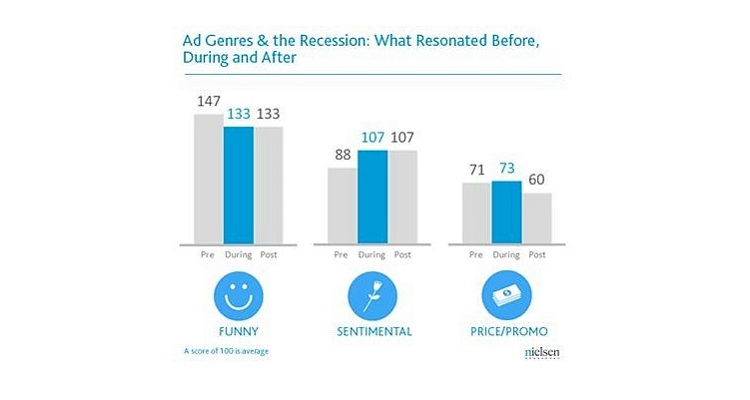Charting the future: India’s economic and employment outlook in 2025 1 Jan 8:03 AM (3 months ago)
India’s economic landscape in 2025 presents a blend of optimism and resilience across various sectors. Overall, the scene is encouraging and optimistic, according to chorus of experts.
Economic outlook
The Reserve Bank of India predicts a 6.6% GDP growth for 2025 (down from 7.7%) citing a rebound in rural spending, increased government investment, and a surge in service exports. (Dec. 30, 2024)
Goldman Sachs predicts India’s economy will grow at an average nominal rate of 6.5% between 2025 and 2030, with a specific forecast of 6.3% for 2025 (Dec. 10, 2024).
Moody’s Ratings estimates GDP growth of 6.6% in 2025 and 6.5% for 2026, driven by a gradual rebound in household consumption and moderating inflation (Nov. 15, 2024).
UBS forecasts steady year-on-year GDP growth of 6.5% from FY26 to FY28, citing the benefits of key reforms that are stabilizing the country’s medium-term economic outlook. These gains are expected to come from a stronger focus on manufacturing, a boost in services exports, and progress in digitalization.
However, UBS notes potential risks from weaker global growth tied to slower U.S. and China economies plus shaky geopolitical situations. While China’s economic influence poses challenges, the China+1 strategy provides India with opportunities to diversify and grow (Nov. 28, 2024).
S&P Global Ratings maintains its FY25 GDP growth forecast at 6.8%, supported by strong urban consumption, steady growth in the services sector, and continued investment in infrastructure (Sept. 19, 2024).
Employment outlook
According to the ManpowerGroup Employment Outlook Survey, which spans 42 countries and surveys over 40,000 employees, India is poised to lead with the strongest net employment outlook for Q1 2025.
FirstMeridian Business Services highlights a 20% increase in jobs tied to emerging technologies, with an overall 17% rise in new employment opportunities.
Roles in demand include application developers, software engineers, DevOps engineers, and specialists in artificial intelligence, machine learning, and cybersecurity.
Generative AI is expected to remain a key trend, driving demand for positions such as Generative AI Engineer, Algorithm Engineer, and AI Security Specialist. Beyond IT, BFSI and telecom are also projected to expand hiring.
Reskilling and upskilling, especially in IT, will remain critical to meet evolving client mandates. The talent platform Foundit (formerly Monster APAC & ME) anticipates a 9% growth in India’s job market, led by sectors like IT, retail, telecommunications, and BFSI.
India’s employment landscape in 2025 promises a strong momentum, with technology-driven roles leading the way and diverse industries contributing to sustained growth.
The post Charting the future: India’s economic and employment outlook in 2025 appeared first on Adglitz.
4 Cannes award winning classics from 1990 that still resonate in 2024 8 Apr 2024 11:03 AM (12 months ago)
 The Cannes Lions International Festival of Creativity, often referred to as the “Oscars of Advertising,”
The Cannes Lions International Festival of Creativity, often referred to as the “Oscars of Advertising,”
1990s marked a particularly interesting turning point in advertising. There was the birth and boom of this little thing called the Internet. It was a time when traditional advertising methods were beginning to share the spotlight with the fresh possibilities of the burgeoning digital age.
A whole new audience
The 1990s saw a new group of people become big spenders – Gen X. Unlike previous generations, Gen X wasn’t so easily convinced by traditional advertising. They were sceptical of all the flashy marketing, and this made ad companies shift their approach. Ads became less forceful and more playful, sometimes even poking fun at themselves.
Going global & saving money
With the world becoming more connected, companies wanted to sell their products everywhere. But spreading their budget thin meant they had to find clever ways to reach a lot of people without breaking the bank. Smaller, specialized ad agencies started popping up, focusing on specific groups of people or finding the best places to show ads.
Award-winning ads: Best of Cannes Lions
Remember those classic commercials from way back? Well, the Cannes Lions International Festival of Creativity celebrates the best of them! In 1990, this event marked a turning point. Traditional ads were still popular, but new, exciting possibilities started emerging. It was a time when traditional advertising methods were beginning to share the spotlight with the fresh possibilities of the burgeoning digital age.
1. Maxell won Cannes Grand Prix
Forget crystal-clear sound and perfect fidelity. Howell Henry Chaldecott Lury took a hilarious gamble with Maxell tapes’ “Into the Valley” ad in 1990. This multi-award-winning campaign poked fun at the often difficult to understand pop lyrics, a bold move considering most music media ads highlight pristine audio quality. But their gamble paid off big time, landing them the prestigious Cannes Lions Film Grand Prix that same year.
2024 relevance
As I see, the ad strikes a chord with 2024 in three broad ways.
First, unlike traditional ads (especially in the consumer electronics space) that rely on polished, sleek production, this one has a raw, almost DIY feel, acting as a precursor to today’s “homemade” content trend popularized by platforms like Instagram and TikTok.
Second, the ad’s theme pokes fun at the anti-establishment, playfully mocking traditionalism (cue the Americanized, hard-to-understand pop lyrics). The subversive humor aligns with today’s trend of content creators challenging norms and expectations.
Third, even after 34 years, the ad doesn’t feel outdated. It captures attention through its street-style, amateur videography. Not just in format (as mentioned in the first point) but also stylistically, it mirrors the mobile-first culture of today. Thanks to 4K and AI editing features available on advanced smartphones, we can now achieve results that once required a full professional team back in the 1990s.
2. Gallaher won Gold
As the curtain closed on an era of tobacco advertising in the UK with a television, cinema and radio ban in the early 1990s, the company Gallaher, with its Hamlet Cigar brand, took a final victory lap. Their iconic “Happiness is a cigar called Hamlet” campaign, which had graced the airwaves since 1966, snagged the coveted Gold award at the prestigious Cannes Lions International Festival of Creativity in 1990, a testament to its lasting impact. Channel 4 later cemented its legacy by ranking it as the eighth greatest television advertisement of all time in 2000.
The 1989 Hamlet Cigars “Snaps” ad is fascinating because it captures the essence of a now-common act—taking a selfie—decades before it became a cultural norm.
A bald man struggles with a roll film camera’s self-timer to take a group photo, a far cry from today’s effortless smartphone selfies. Yet, this attempt at self-photography bridges 1989 and 2024, proving that while technology evolves, the impulse to capture a moment, document an experience, and connect with others remains timeless.
At its core, the ad speaks to universal emotions—the desire to preserve memories and share experiences. This emotional thread connects past and present, making the ad as relevant in today’s selfie-driven world as it was then. Despite its outdated technology, the themes of human connection and memory-making still resonate with modern audiences.
3. Opticians Federation won Gold
This funny public information film from the Opticians Federation, UK, likely no longer exists in its original form. It may have evolved into either the British Optical Association (BOA) or The Optical Confederation (OC). Like any well-meaning industry association, the OC (or perhaps the BOA) also seems to have aimed to raise public awareness about optometry and eye care – interestingly enough, with great success, as evidenced by their Cannes Lions performance.
2024 relevance
The message of eye care is more relevant than ever in 2024, with digital eye strain increasing year after year. Humor remains a powerful tool in public awareness campaigns. It’s a timeless, effective way to grab attention and deliver a clear message that resonates with today’s audience.
4. Baltimore Symphony Orchestra won Gold
The Baltimore Symphony Orchestra (BSO) is an American symphony orchestra based in Baltimore, Maryland. Drawing parallels to sports, this commercial positioned the Baltimore Symphony Orchestra as Baltimore’s “other major league team,” implying a level of excellence and competition similar to professional sports franchises in the city. It likely also aimed to invoke civic pride, positioning the BSO as a cultural institution that rivaled the city’s major sports teams in importance while highlighting its artistic merit.
2024 relevance
The ad remains relevant in 2024 due to its focus on innovation, performance, local pride, and the enduring appeal of classical music. While some elements could be modernized, the core premise of promoting a local cultural institution remains fresh and inspiring, a stark contrast to the blend content often seen today.
Similar posts: 5 award winning billboard advertisements
Times of India wins Cannes Lions
The post 4 Cannes award winning classics from 1990 that still resonate in 2024 appeared first on Adglitz.
Humor wins: Why funny communication always gets a laugh (and a sale) 30 Jun 2022 1:12 PM (2 years ago)
Funny and happy, humor in marketing always strikes gold. Regardless of economic climate, they invariably perform well, according to a Nielsen study. To add to this, new research by Oracle revealed that people want brands to make them smile and laugh.
The Nielsen report, titled “Global Ad View,” analyzed over 4,000 ads from before, during, and after the Great Recession. The study found that funny commercials always outperform serious ones.
On average, before the recession, funny ads packed 47% more punch than their serious counterparts and 33% more afterward.
The research report, conducted by Oracle found that 91% of buyers prefer brands to be funny and 72% would choose a brand that uses humor over the competition. But there is a catch here: 95% of business leaders are afraid to joke around, the study states.
What else did the Nielsen study further find? It said that while humor in digital marketing undeniably draws attention, other variables also resonated with viewers. Factors like family-focused, health-conscious, and value-driven messages all vied for second place at 38% each. Interestingly, celebrity endorsements (12%) and athlete sponsorships (8%) didn’t perform as well as we believe they do.
The Nielsen Global Survey of Trust in Advertising polled over 29,000 digital users across 58 countries.
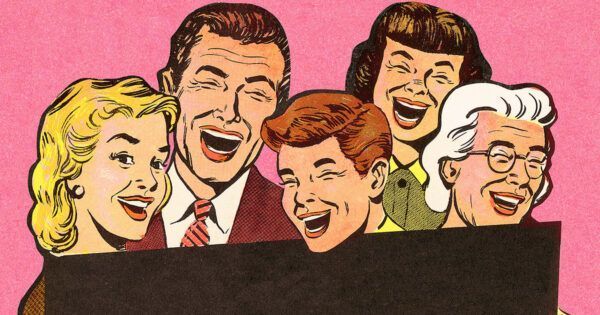
The Oracle study sums it up by emphasising that people are searching for happiness in new ways and are willing to pay a premium if variables match – only if the leadership walks the path.
This research includes insights from more than 12,000 consumers and business leaders across 14 countries.
At the same time, companies have to be careful in how they use humor in communication. It’s a double-edged sword. The assertion that humor always performs can be a bit of an oversimplification. There are many instances when campaigns have brought negativity and unwanted criticism to the brands.
The post Humor wins: Why funny communication always gets a laugh (and a sale) appeared first on Adglitz.
From Russia to Spain: A global wave of tighter alcohol advertising 13 Apr 2021 8:37 AM (3 years ago)
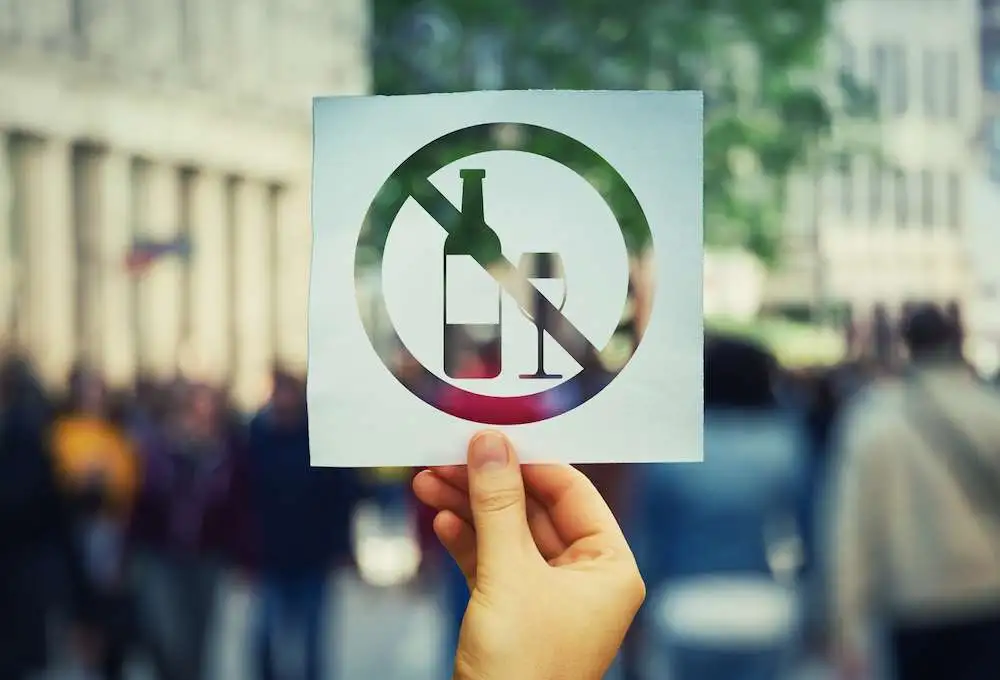
Compared to its northern European neighbors, Spain has traditionally held a less regulated, more relaxed attitude toward both the promotion and distribution of alcohol products. But the growing international trend toward introducing stricter curbs on advertising and consumption of alcohol has now reached this Iberian nation known as the land of ‘fiestas”.
A set of proposals to regulate alcohol advertising, up for debate in the Spanish parliament, coincides with the Interior Ministry’s efforts to clamp down on the growing popularity among teenagers to hold open-air drinking sessions which have been dubbed “botellon” (“big bottle”).
Among new measures being touted are punishments of community service, withdrawal of driving licenses, fines for vendors selling to minors and most significantly, raising the age of alcohol consumption from 16 to 18.
To reinforce these attempts to put Spanish youth out to dry, the coming alcohol advertising bill seeks to prohibit “any form of advertising, direct or indirect, of alcoholic drinks to people under 18”.
More specifically, the bill also wants a TV and radio advertising ban of any alcoholic beverages containing more than 20 degrees of alcohol; limiting the promotion of beer, wine and cava (a local form of champagne) on TV between 10 p.m. and 8 a.m.; and limiting the air time of alcoholic ads to 15% of a TV channel’s total advertising slot.
Alcoholic brands would also be prohibited from sponsorship of TV programs.
For print media, the bill proposes no advertising of alcohol on the covers, inside or back pages of publications. Alcoholic beverages would be limited to no more than 25% of a newspaper or magazine’s total advertising pages.
The bill also suggests an outright ban of any alcohol advertising in cinemas and the ad ban of drinks with more than 20 degrees alcohol in outdoor media.
The content of alcohol ads would also be regulated. Ads would not be able to suggest that alcohol in any way helps drinkers to achieve social or sexual success.
The fight for stricter alcohol ad rules in Spain come only a month after the Russian parliament the State Duma proposed to ban beer advertising which includes the use of people (especially famous personalities) and animals in beer ads, and the promotion of beer as a drink to satisfy thirst.
Using the kind of rhetoric that would be counter-productive say in Spain, Vladimir Zhirinovsky, vice-speaker of the Russian Duma told Reuters: “Not American missiles, but [the] alcoholization of people and drugs aggression threaten us. Our society is tired of aggressive advertising of the yellow devil.”
In what was rather a surprise outcome, an overwhelming 304 parliamentarians approved the amendments, with only 13 voting against them in the first reading. The parliament has to approve the amendments another time before the bill can become adopted as new legislation. A decision is expected in May.
However, beer marketers are expecting parliamentarians will soften the Russian measures. They suggest beer advertising aimed at young people might be restricted, along with promotions positioning beer as a thirst quencher.
Peru, where it is rather common for beer sellers to flog their products in traffic-jammed motorways, a new law was proposed in April that would force alcoholic beverages and advertising for them to carry warning labels about their affect on health.
Propelling the new law, which is being discussed in the congressional Health Commission, is the rash of recent traffic accidents in Lima that has left scores of people dead, including a police officer. The drivers of the cars involved in the accidents were drunk.
“This law is about prevention. We need to raise awareness about the dangers of drinking in excess,” said Rep. Santa Maria, a member of the American Popular Revolutionary Alliance (APRA) party.
Besides warning labels on cans and bottles, the proposed law would ensure advertisements for alcoholic beverages carry a disclaimer saying that excess consumption is harmful to health.
“The law calls for TV, radio and print ads to also include warnings about drinking alcohol. This is necessary to protect consumers,” said Mr. Santa Maria.
Predictably, the Alcohol Beverages Committee within the National Society of Industries opposed the need for a law forcing companies to place warning labels. “We can put labels on the products, but more important than labels are public awareness campaigns and we are already doing that,” said Luis Taipe, head of the committee.
The U.K. has also recently mooted the introduction of tobacco-style health warnings on alcohol advertisements. At the end of last year, the government’s Chief Medical Officer Liam Donaldson mentioned in a report, the need to “change attitudes to problem drinking to make it socially less acceptable” and to “convey a consistent message on how to minimize the risk of using alcohol.”
The move was immediately slammed by the Incorporated Society of British Advertisers (ISBA). “All research shows that (warnings) could have an opposite effect on youngsters” argued Ian Twinn, head of public affairs at ISBA. Instead, the body suggested the government focus on ‘positive’ ads that promote sensible drinking.
Other proposals made in different markets within the last year include:
EUROPEAN UNION
In 2001, European health ministers decided to adopt a soft approach to reduce underage drinking, rather than pushing for a new legislation. Sweden however, which bans alcohol advertising, pushed for its protectionist approach to marketing to be taken up elsewhere in the Union.
FRANCE
In October last year, French Health Minister Bernard Kouchner launched a wide-ranging anti-alcohol campaign from Omnicom Group-owned CLM/BBDO, Paris that targets three subjects: detection of problem drinking by physicians, better handling of alcohol-related emergencies and greater alcohol-awareness, particularly among young people. The campaign from CLM/BBDO includes two new films destined for cinema and TV as well as distribution of more than four million anti-alcohol abuse brochures nationwide.
SOUTH AFRICA
South Africa’s Central Drug Authority, a government body that advises on the prevention of substance abuse, proposed wide-ranging restrictions and prohibitions on advertising of liquor products.
These include the banning of TV and radio advertising between 6 p.m. and 10 p.m., the compulsory inclusion in liquor advertisements of alcohol abuse warnings, and warning labels on liquor packaging.
The authority also called for government departments to step up efforts to inform the public of the dangers of excessive alcohol use with messages carefully crafted “so as not to encourage the forbidden fruit phenomenon.”
VENEZUELA
In Venezuela, the across-the-board prohibition of all liquor and cigarette advertising outlined in Venezuela’s new Public Health Law now being debated in the National Assembly was mended to make it more flexible.
THAILAND
Last year, Thailand’s Health Promotion Foundation blamed an alarming increase in new drinkers — especially among teenagers and women — on lax ad rules for alcoholic beverages.
AUSTRALIA
The powerful Australian Medical Association has urged the federal government in the past to legislate so that all alcoholic beverage advertising carries a warning of what the AMA says is safe daily consumption.
The post From Russia to Spain: A global wave of tighter alcohol advertising appeared first on Adglitz.
Don’t send your food to hell: Mylanta’s hilarious take on heartburn 27 Mar 2016 11:34 AM (9 years ago)
Mylanta, an antacid known for relieving gas, heartburn, and indigestion, have a distinct line of its own in the pharmaceutical world with its hilarious advertising campaigns. Unlike many serious-toned competitors, Mylanta uses humor to make light of uncomfortable digestive issues.
Laced with slapstick and exaggeration, the new campaign also deals in physical humor and over-the-top reactions, making them super funny and engaging.
Instead of focusing solely on the benefit, the ads show us what “hell” looks like, referencing the discomfort of heartburn and stomach acid, implying that Mylanta helps avoid digestive “hellfire.”
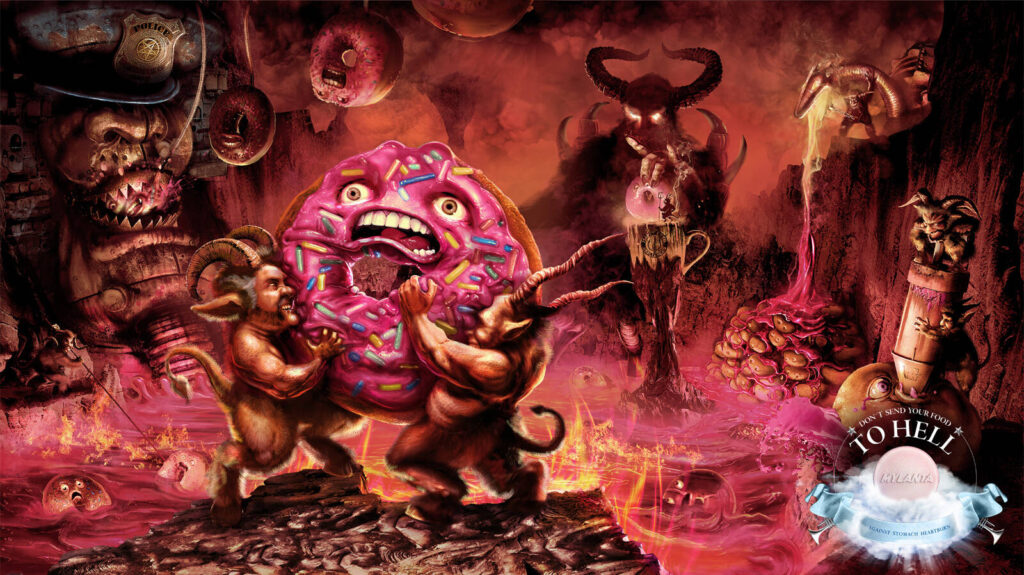

Credits:
Advertising Agency: Kepel&Mata, Argentina
Executive Creative Directors: Damian Kepel
Creative Directors: Alvaro Yermoli, Rodrigo Diaz
Art Director: Juan Ignacio Etchanique
Copywriter: Federico Wilhelm
Account Manager: Gonzalo Fasson
Account Supervisor: Carolina Montarcé
Illustrator: Emiliano Pereyra
Similar post: The art of laughter: 58 clever print ads that combine wit with design
The post Don’t send your food to hell: Mylanta’s hilarious take on heartburn appeared first on Adglitz.
Driving consistency in customer experience 28 Feb 2016 8:57 AM (9 years ago)

The constant addition of digital communication channels and devices have obliged organizations to create seamless customer experiences across these proliferating channels.
Businesses struggle to ensure that the experiences they create and the promises they make translate into the actual experiences that consumers have when interacting with their brands — no matter the channel or device.
Failing to deliver on brand promises quickly destroys an organization’s online reputation. Link
The post Driving consistency in customer experience appeared first on Adglitz.
6 memorable coffee ads of all time 16 Jan 2016 12:34 PM (9 years ago)
The world of coffee advertising is filled with memorable campaigns, but a few truly stand out as iconic and even achieve “cult” status. While some of these ads may no longer be in circulation, they’re so effective that they can still evoke a strong response today. From home-brewing traditionalists to instant on-the-go aficionados, everyone has a different relationship with coffee. This deep connection with the beverage fuels the creation of equally diverse and creative coffee advertisements. Here are some of the most famous:

1. Folgers: “The Best Part of Waking Up is Folgers in Your Cup” (1984-Present): This jingle is practically ingrained in American pop culture. The simple, heartwarming message and catchy tune have made it a timeless classic.
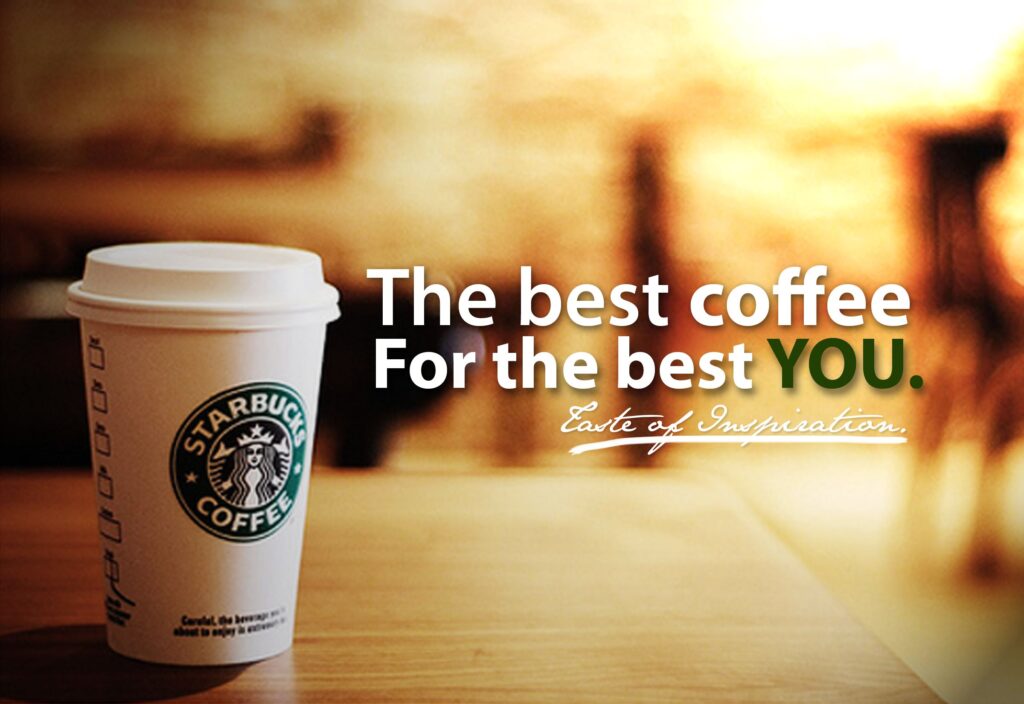
2. Starbucks: Best coffee for the best YOU: It’s a clever example of simplified aspirational marketing. It uses emotional connection and brand image to position Starbucks as a part of a desirable lifestyle.
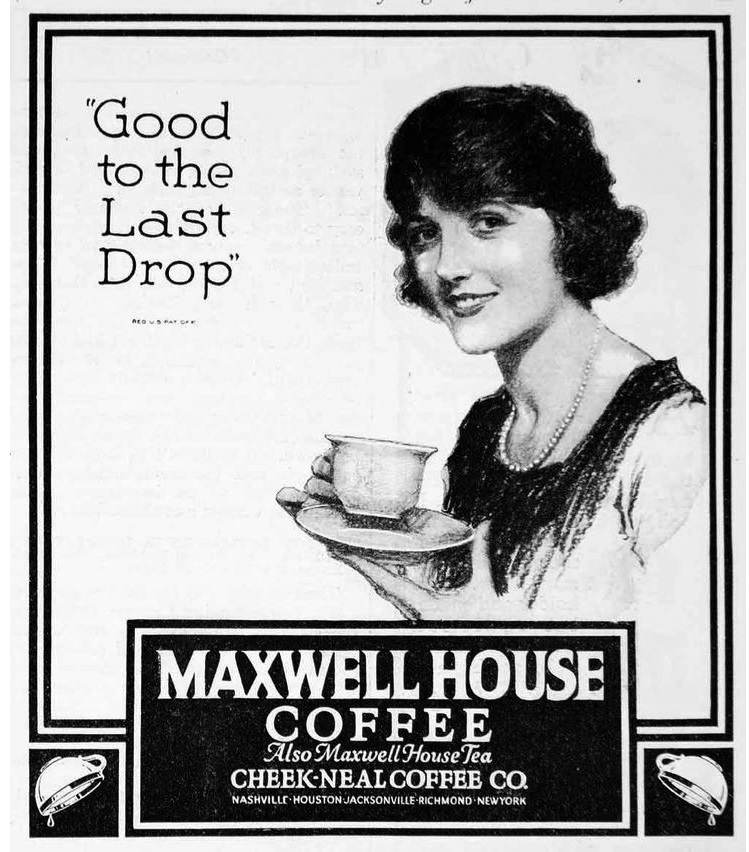
3. Maxwell House’s “Good to the Last Drop” (1940s-Present): This long-running slogan, often paired with celebrities enjoying Maxwell House coffee, cemented the brand’s reputation for quality and consistency.
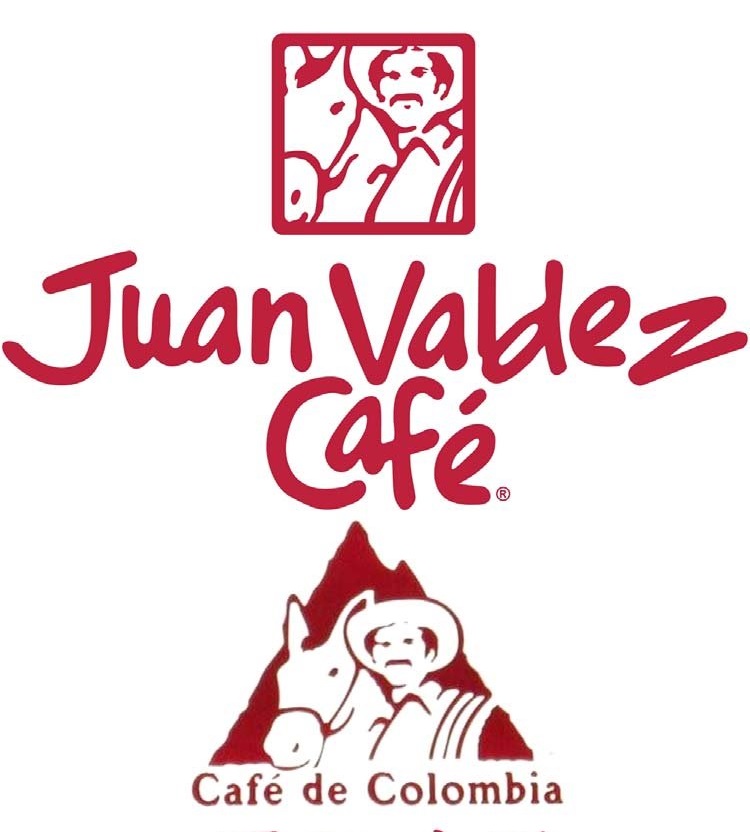
4. National Federation of Coffee Growers of Colombia’s Juan Valdez (1958-Present): This Colombian coffee brand mascot, a fictional character is a traditional coffee farmer. He represents authenticity and fair-trade practices. Juan Valdez becomes a recognizable symbol for an ingredient brand to specifically denote coffee beans that are only grown and harvested in Colombia.
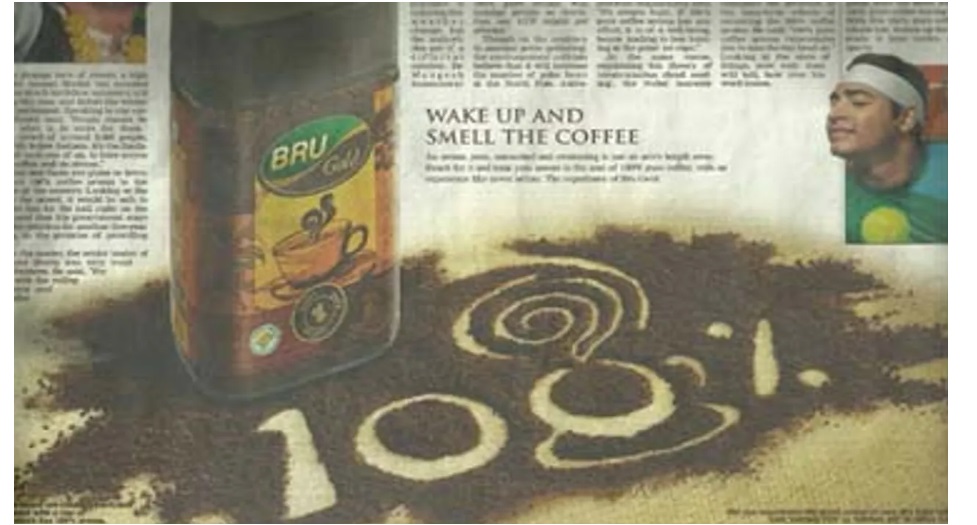
5. Bru Gold: Wake up and smell the coffee: Classically straightforward and memorable, this is how I would sum up India’s Bru Gold advertisement, which uses sensory cues and a familiar call to action to position Bru Gold as an essential part of a morning routine.
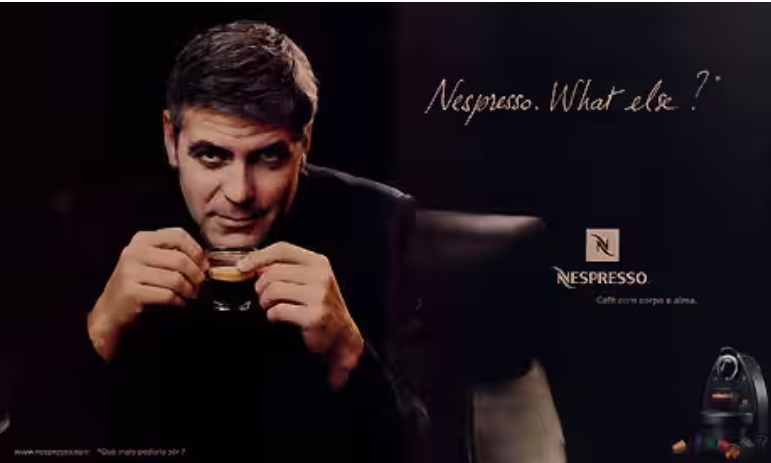
56 Nespresso (2000s-Present): George Clooney’s sophisticated persona has been a key element in Nespresso’s ads. The association with luxury and effortless enjoyment made Nespresso a status symbol. A famous campaign that promised to turn just about anyone into a morning person and it did to a large extent. Even George recognises that a memorable morning begins with unforgettable taste.
While the definition of “cult” can be subjective, these few examples showcase campaigns with enduring qualities. They’ve all become ingrained in popular culture thanks to their memorability and lasting impact.
The post 6 memorable coffee ads of all time appeared first on Adglitz.
Strong and steady: Kitadol combats period stigma 29 Nov 2015 8:58 PM (9 years ago)
Kitadol has a history of creating interesting (and award-winning) advertising campaigns that focus specifically on breaking down menstruation stigma. Their campaigns often feature women in traditionally masculine settings, like boxing in this case.
In this campaign, the woman, portrayed as a co-passenger in a traditionally masculine setting (like an irritated boxer here), represents someone experiencing the physical or emotional effects of their period. She exhibits nonverbal behavior that we would normally recognize as the interaction between a tense couple. The man looks nervously at the woman, and she has turned her back on him while staring sourly into the adjacent child’s stroller.
The ad seem to rely on a stereotypical claim (albeit negatively) that women act as aggressive boxers when they have their periods. The message implies that Kitadol can help transform this “aggressive monster” back into a presumably calmer state.


Credits
Advertising Agency: Prolam Y&R, Santiago, Chile
Executive Creative Director: Tony Sarroca
Creative Director: Francisco Cavada
Art Director: Jorge Muñoz
Copywriters: Fabrizio Baracco, Cristian Martinez
Account manager: Francisco Cardemil
Similar blog: 5 award winning billboard ads
The post Strong and steady: Kitadol combats period stigma appeared first on Adglitz.
The secret power of birds in marketing: From Hitchcock to Hungry Stomachs 9 Sep 2015 7:45 AM (9 years ago)
Unlike the endless stream of dancing dogs and singing cats, birds (or “feather friends” as we affectionately call them) haven’t achieved A-list status in advertising history.
Think about it: a penguin waddling across the screen instantly evokes ideas of travel and adventure. An owl perched on a stack of coins seamlessly conveys financial expertise. This ability to connect with viewers on a subconscious level makes birds powerful brand ambassadors.
Even in today’s digital age of flashy visuals and complex narratives, their appeal goes beyond mere cuteness. Birds offer versatility. Their playful antics can inject humor and grab attention, while their majestic presence or symbolic associations can elevate a brand’s message.
Here, I share seven ads featuring birds.
Get organized with Peter Walsh: OfficeMax

Billboards in Chicago, Los Angeles and Phoenix introduced organizational expert Peter Walsh’s branded office system at OfficeMax or Office Depot. See those little guys in the middle there? Talk about pigeon holes, so to keep your file folders, document sleeves, document wallets or various accessories in separate categories. We are talking about 2009.
The Birds is coming: The Birds

Alfred Hitchcock, known for his masterful suspense, caused a stir with his advertising campaign for “The Birds” in 1963. He unveiled the campaign by featuring birds and a slogan “The Birds is coming!” which, while grammatically correct (referring to the film as a singular entity), felt off to many. This sparked outrage from language purists and even concerned letters from schoolchildren, all giving the film unintended but valuable free publicity. Hitchcock, it seemed, had achieved his goal – a suspenseful build-up to the film’s release, fueled by a seemingly simple slogan.
Stomach Birds: Chromax

“Silence the birds in your stomach. Chromax. Helps in decreasing weight” is a a slogan from the 2013 Egyptian print campaign “Stomach Birds” for the brand Chromax. The campaign’s concept is based on the Egyptian proverb “My stomach birds are humming”, which is used to express deep hunger. The campaign’s goal was to communicate Chromax’s main function, which is to increase feelings of fullness.
Credits
Advertising Agency: DDB, Cairo, Egypt
Creative Director: Bassem Sabry
Art Director / Illustrator: Mohamed Gaber
Copywriters: Ramy Badr, Heba El Habashi
Published: June 2013
Penguins: MakeMyTrip
Think Blue: Volkswagen

Advertising Agency: DDB, London, UK
Creative Director: Jeremy Craigen
Art Director: David Mackersey
Copywriter: Jonathan John
Designer: Pete Mould
Published: April 2012
Globally yours: Turkish Airlines

This Valentine’s Day, take your beloved one and fly away…
Advertising Agency: McCann, Istanbul, Turkey
Chief Creative Officer: Folker Wrage
Creative Group Head / Art Director / Retouch: Firat Yildiz
Copywriter: Yavuzhan Gel
Photographer: Stock
Make room for nature: National Geographic

Make Room for Nature.
Advertising Agency: FoxP2, Cape Town, South Africa
Creative Directors: Justin Gomes, Andrew Whitehouse
Art Director: MIchael Lees-Rolfe
Copywriter: Gavin Williams
Illustrator: Arri Reshcke
Published: June 2012
More strength and health for your birds: Three birds

Advertising Agency: RBA Publicidade, Novo Hamburgo, Brazil
Creative Directors: Felipe Schlickmann, Minwer Daqawiya
Art Director / Illustrator: Vinícius Cunha
Copywriter: Angelo Pilla
Published: April 2009
Every trip begins at Rikushet: Rikushet

Creative Director: Tzur Golan
Published: July 2014
Similar post: Cats vs. dogs: The battle for slogans in pet food ads
The post The secret power of birds in marketing: From Hitchcock to Hungry Stomachs appeared first on Adglitz.
French ads: a world of wit, style, and artful persuasion 20 Jun 2015 3:15 PM (9 years ago)
French ads are often characterized by their seductive, humorous, and creative nature, drawing viewers in with charm and wit. They prioritize style, sensuality, and poetic expression over factual information, distinguishing them from their American counterparts.
The specialty of French advertising lies in its ability to captivate audiences through subtlety, sophistication, and an artful approach to persuasion, making it a unique and intriguing facet of the global advertising industry.
French advertising differs significantly from US advertising. It’s often said that US ads aim to inform and persuade, while French ads seek to seduce. While I’m not entirely sure how accurate this distinction is, based on my limited exposure to French ads, I’ve found them to be vibrant, humorous, appealing, and incredibly creative. Are clients in France more open to experimenting with new ideas?
French commercials speak to French culture no less than French literature or music does.
New York Times writes, French commercials are said to appeal to the heart, not the wallet, and are known for being poetic, sensual, and stylish.
Long on sensuality, style and poetry, they are notably lean on facts and nearly allergic to the rough-and-tumble of commerce. It’s forbidden here to denigrate your competitors in a television advertisement or to instruct viewers to call a certain number now to buy a product (save for exceptional cases). Hard-sell tactics, standard in America, just don’t wash in France.
Let’s check out 12 new ads from France. They might not be the most famous ones you’ve seen, and you might think they’re just ordinary ads. But we like a dust laden uncared street flower, we will still find a distinct flavor of Frenchness in them.
1. Amnesty International

Ad slogan: We will never let money hide reality from us
Advertising Agency: TBWA, Paris, France
Production: Henry de Czar
Director: Joe Vanhoutteghem
Executive Creative Directors: Eric Holden, Rémi Noël
2. Opel

French ad slogan: Wir Leben Autos (We live cars)
Advertising Agency: Y&R, Paris, France
Creative Director: Jorge Carreno, Robin De Lestrade
Art Director / Copywriter: Eric Esculier
Account Directors: Clement Chovin, Christophe De Jandin
Illustrator: Patrick Gernignon
Account Manager: Muriel Mallet
3. Connect 4


Advertising Agency: DDB, Paris, France
Executive Creative Director: Alexandre Hervé
Art Director: Jessica Gerard-huet
Copywriter: Jean-françois Bouchet
4. letudiant.fr

Ad Copy: When I grow up I’d like be the French president so my wife will be a model.
Are you sure of the job you are going to choose?
letudiant.fr
Youth’s got future
Creative Director: Eric Hélias
Art Director: Gregory Jeanjacquot
Copywriter: Eric Hélias
Illustrator: Monsieur O.
5. Tik Tok
I liked how the communication maintained a touch of sophistication which often resonates with French audiences. There is a balance of playful surprise and elements with a sense of elegance. This ad is part of TikTok’s national campaign promoting the platform as a hub for creativity and diverse communities.
6. Nissan

Nissan Navara
Advertisement tagline: More capacity for fun
Advertising Agency: TBWAG1, France
Creative Directors: Eric Holden, Rémi Noël, Alasdhair Macgregor Hastie
Art Director: Sébastien Guinet
Copywriter: Josselin Pacreau
Illustrators: Surachai Puthikulangkura, Supachai U-Rairat / Illusion
Producers: La Manufacture, Somsak Pairew, Anotai Panmongkol / Illusion
7. Vapona

Tagline: If you hate mosquitoes.
Advertising Agency: Herezie, Paris, France
Creative Director: Andrea Stillacci
Copywriter: Céline Lescure
Art Director: Julian Brice
Planner: Luc Wise
Photographer: Getty Images
Retoucher: La Manufacture
Print Producer: Capucine Lhermitte
8. McDonald

French ad slogan/tagline: Find a list of restaurants at gomcdo.fr and on the McDonalds iPhone app
Advertising Agency: TBWAPARIS, Boulogne Billancourt, France
Executive Creative Directors: Eric Holden, Rémi Noël
Creative Director: Jean-François Goize
Art Director: Marianne Fonferrier
Copywriter: Glen Troadec
Photographer: Marie-Pierre Morel
Art Buyer: Dorothée Dupont
9. UGC Movies

Advertising Agency: TBWA, Paris, France
Director: Emma Luchini
Executive Creative Directors: Philippe Simonet, Eric Holden, Remi Noel
Art Director: Philippe Taroux
Copywriter: Benoit Leroux
Producer: Maxime Boiron
DoP: Laurent Tanguy
Sound Design: Benoit Dunaigre
Agency Producer: EMMA
Agency Producer: Virginie Chalard
Editing Company: Reepost
Post production: Coralie Duarte / Reepost
Editor: Benjamin Favreul
10. Mountain Riders

Ad Copy & Slogan: Save the Mountain
Participate in our clean the slopes days
Mountain Riders
Advertising Agency: Marcel, Paris, France
Creative Directors: Emmanuel Lalleve, Florent Imbert
Art Director: Julien Simons
Copywriter: Xavier Le Boullenger
CEO: Pascal Nessim
Account Supervisor: Céline Colin
Photographer: Sacha Goldberger
Art Buyer Supervisor: Jean-luc Chirio
Art Buyer: Anne Traonouil
11. Vigineo

Ad punchline: Because you can’t always trust luck
Advertising Agency: Ogilvy & Mather Paris, France
Executive Creative Director: Chris Garbutt
Art Directors / Copywriters: Florian Bodet, Nicolas Lautier, Baptiste Clinet
Photographer: Patrick Messina
Illustrator / Typographer: Mr. Messy
12. Ford

Ad copy: For those moments you go a little bit off track. Lane departure warning system.
Advertising Agency: Ogilvy & Mather, Paris, France
Executive Creative Director: Chris Garbutt
Creative Director: Thierry Chiumino
Copywriters / Art Directors: Florian Bodet, Baptiste Clinet, Nicolas Lautier
Photographer: Laziz Hamani, Patrick Messina
The post French ads: a world of wit, style, and artful persuasion appeared first on Adglitz.
